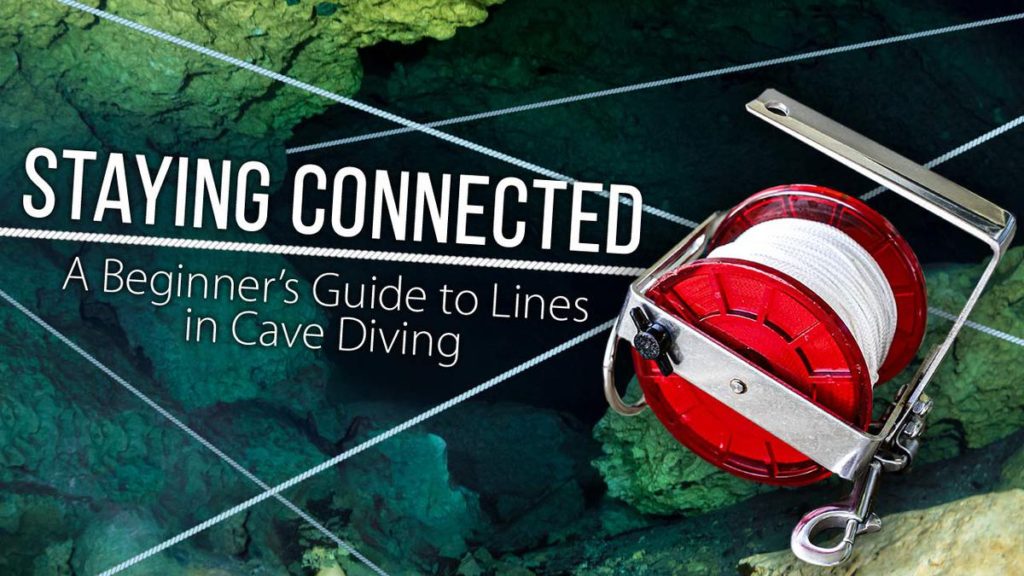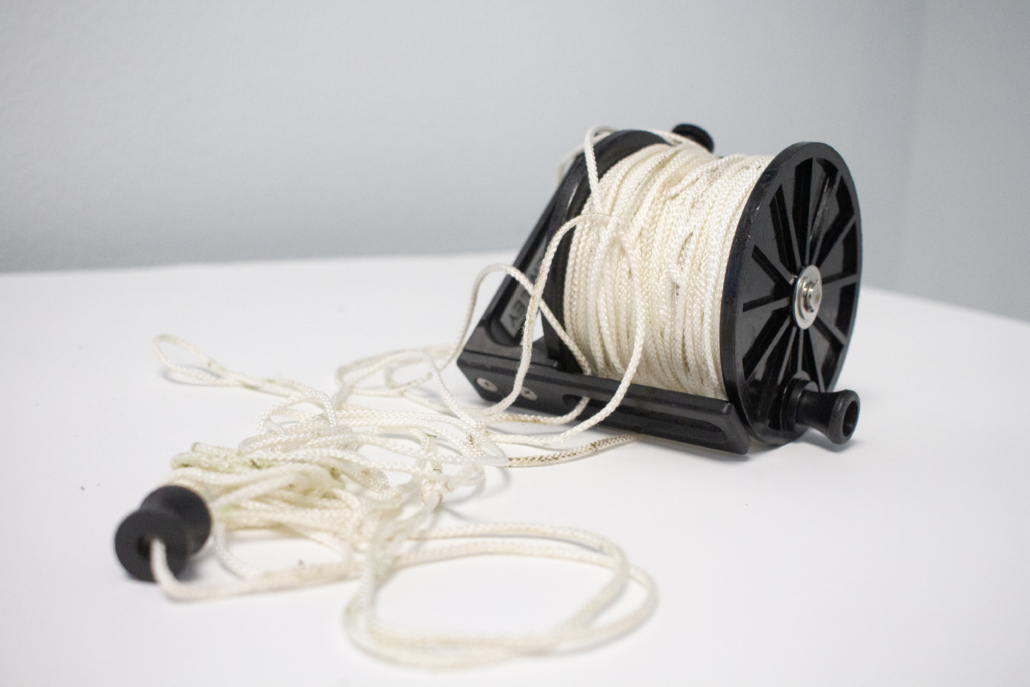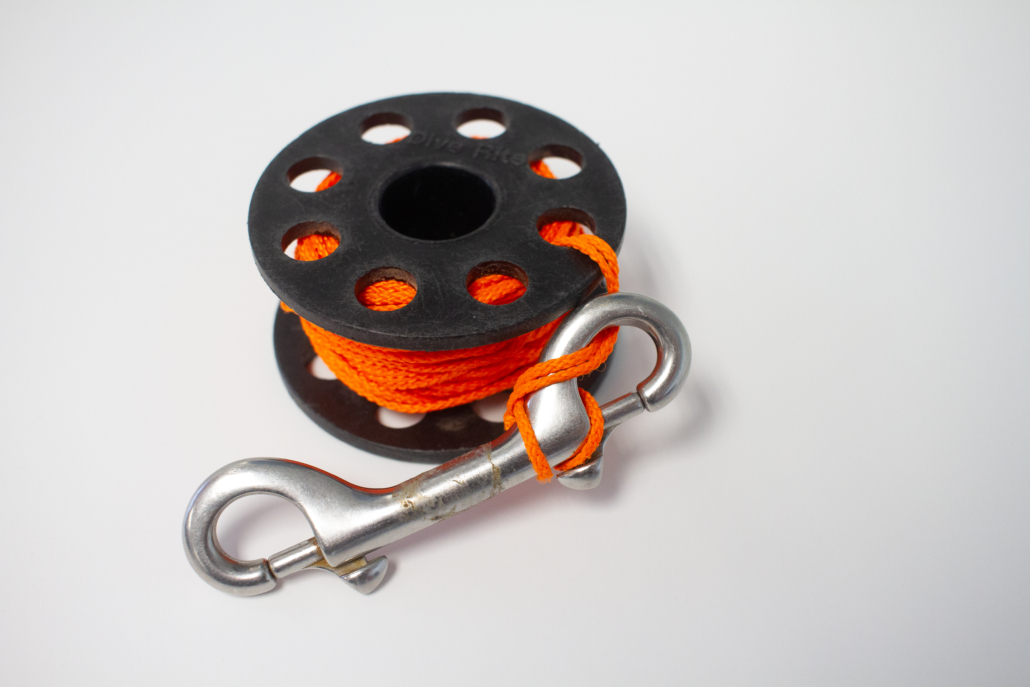Spooling up to start overhead training? Reely confused on all the guideline terminology? (See what I did there?). Let’s spend a few moments clearing up the different types of line handling devices, their uses, and advantages/disadvantages to each type.
Types of line handling devices
There are two basic types of line handling devices – reels and spools. Reels typically have a spool of line captured within some sort of frame. Attached to the frame is a handle. The handle may be mounted over the spool of line, or alongside it. Many cave divers have gravitated to the side handle designs in recent years, especially for primary reels (more on that later). A clip attached to the body allows for stowing on a d-ring. A knob on the spool allows the user to easily wind in the line. There is usually some sort of locking device that keeps the line from unspooling unless it is released.
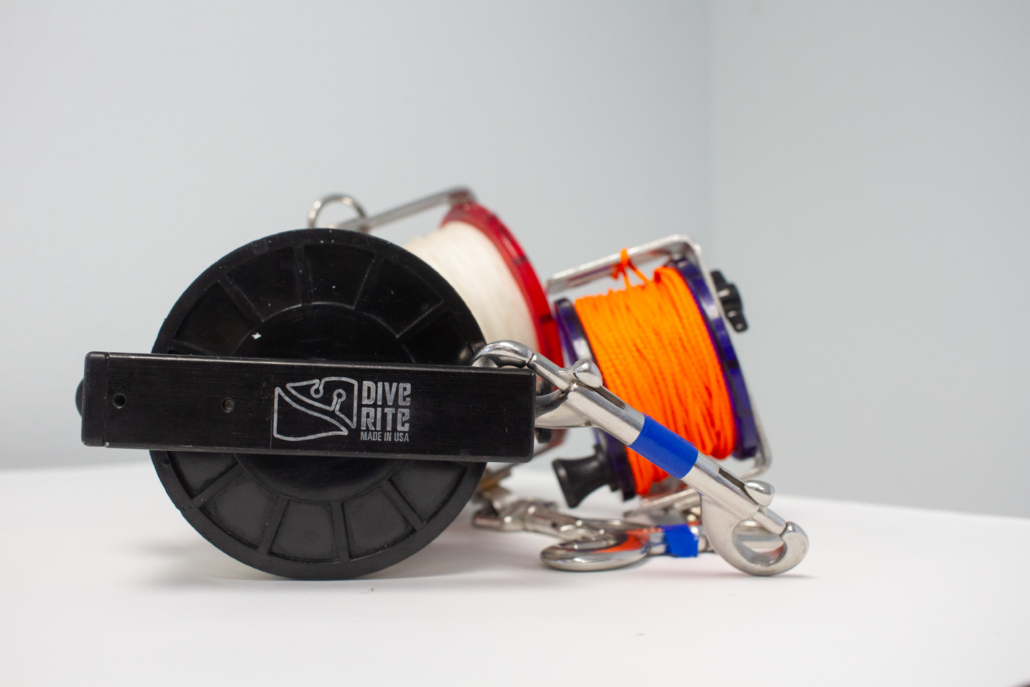
Not all locking devices work as well as others, and not all are suitable for cave diving.
Many cave instructors and cave divers agree that the ratchet style locking device isn’t well suited for cave diving. Most prefer a simple locking screw. Recent models from some manufacturers include a barrel-bolt style locking device, like what might be used on a garden gate, that is spring-loaded and easily operated by the hand running the reel.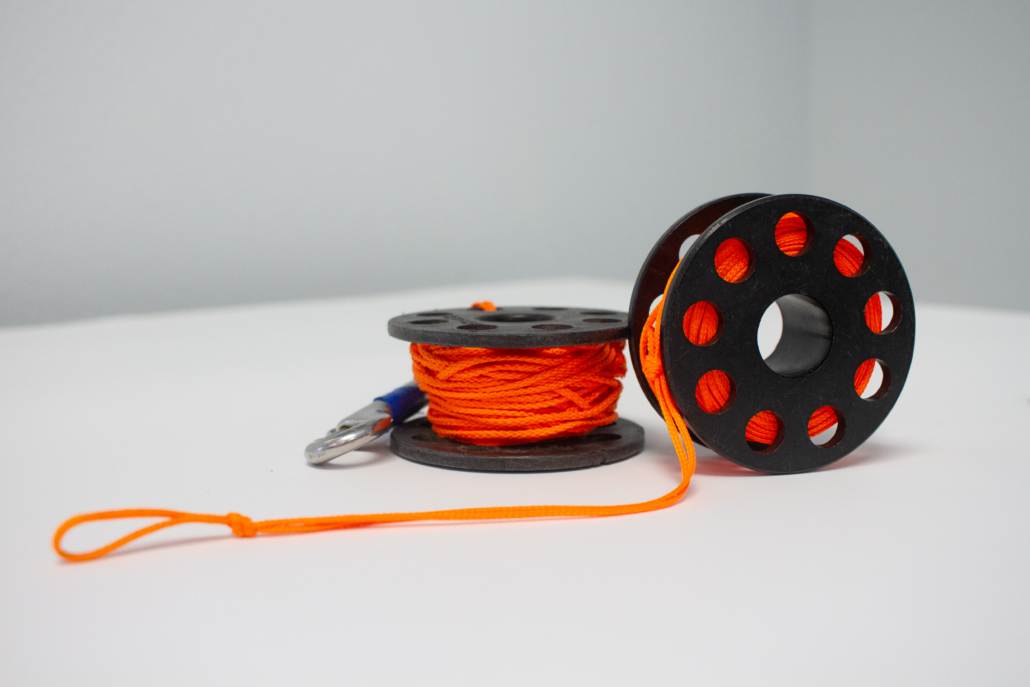
Spools tend to be much simpler.
They are also known as finger spools. They are usually just that – a spool to hold the line with a large enough opening in the middle of the spool that they can be held between the thumb and forefinger as line is deployed. Stowing line is done by wrapping it manually on the spool. Some recent variations on the finger spool include a version that incorporates a pop-out handle and winding knob (also known as a “spooly”) and a version that also incorporates the functions of a cookie, or non-directional line marker. Spools are typically used with a double-ended bolt snap (aka double ender) for stowing and clipping off in use.
Uses for Reels and Spools in Cave Diving
One of the cardinal rules of cave diving is to maintain a continuous guideline to open water. Many popular cave systems do have lines already installed in the cave, but they may not be continuous. Often times they start well into the overhead environment to avoid enticing untrained divers to follow them into the cave. So, reels and spools are used by cave divers for several purposes:
- Primary reel – this is typically a reel and usually contains 250 – 450 ft (75-135 meters) of braided nylon line. Primary reels are used to connect the permanently installed mainline to open water. Typically, only one primary reel is needed per dive team. Versions of primary reels holding even more line may be used to explore passages that have not been previously lined.
- Safeties – these can be either a reel or a spool and usually contain around 150 ft/45 m of braided line. Safeties are used in case of a lost line, a lost buddy, a broken line, or other situations in the cave where you may need to leave the main line you are traveling on. Most cave instructors agree that each diver should carry two safeties.
- Jump/Gap – these can also be either a reel or a spool. Either usually has around 50 ft/15 m of line, although larger and smaller capacity sizes may be useful depending on the dive. Jump spools/reels are used to connect the main line to a side passage line. Gap spools/reels are used to connect an intentional break in the mainline, typically across an opening such as a karst window or sink. These are areas of open water, and the permanent lines usually terminate in the overhead. The team will carry enough jump or gap reels/spools for the planned number of jumps or gaps on a given dive. Depending on the planned dive, a team may need none, or multiples per diver.
Advantages and Disadvantages
Reels have several advantages over spools:
- They usually hold more line and work better when longer runs of line need to be deployed
- The winding knob makes it easier to rewind the deployed line on the spool
They do, however, have a couple of disadvantages:
- If allowed to freespool, they may end up a tangled mess. This is often referred to as “birdnesting” because the tangled line resembles a bird’s nest. If used as a safety, a tangled reel may make a bad situation worse. For this reason, many divers prefer at least one if not both of their safeties be finger spools.

- The line may jump off the spool and jam between the frame and spool. Some versions of reels are engineered to minimize the chance of this happening. Other versions are designed to allow the diver to easily clear such a jam. Yet others, however, leave the reel nonfunctional, and the diver must wrap the line around the frame to retrieve the line and then sort it out later when back on the surface.
- Reels are typically larger and take up more space for a given amount of line storage.
Spools, on the other hand, have advantages over reels:
- Virtually impossible to foul or birdnest a spool, making them the preferred choice for safeties
- Impossible to jam a spool as there is no frame
- Easy to deploy line
- Take up less space, so more spools can fit in a pocket or be clipped on a d-ring
That said, however, there are also some disadvantages:
- Spools don’t have as large a capacity, so aren’t suited for use as a primary and may not work for longer jumps
- Double enders may come unclipped allowing the spool to drop or spill line behind the diver (but this can be addressed through proper clipping techniques)

- Spools must be wound up by hand wrapping the line around the spool. This is slower than reeling in a line, and often leads to twisting the line as it is wrapped. This needs to be corrected after the dive before using the spool again.
Most cave divers will wind up owning an assortment of reels and spools, and usually multiples of each. Your instructor can assist you in selecting the size and type of each that will work best for your cave training. No matter how many you own, however, it seems like you always need one more!
By: Brian Shreve
.

